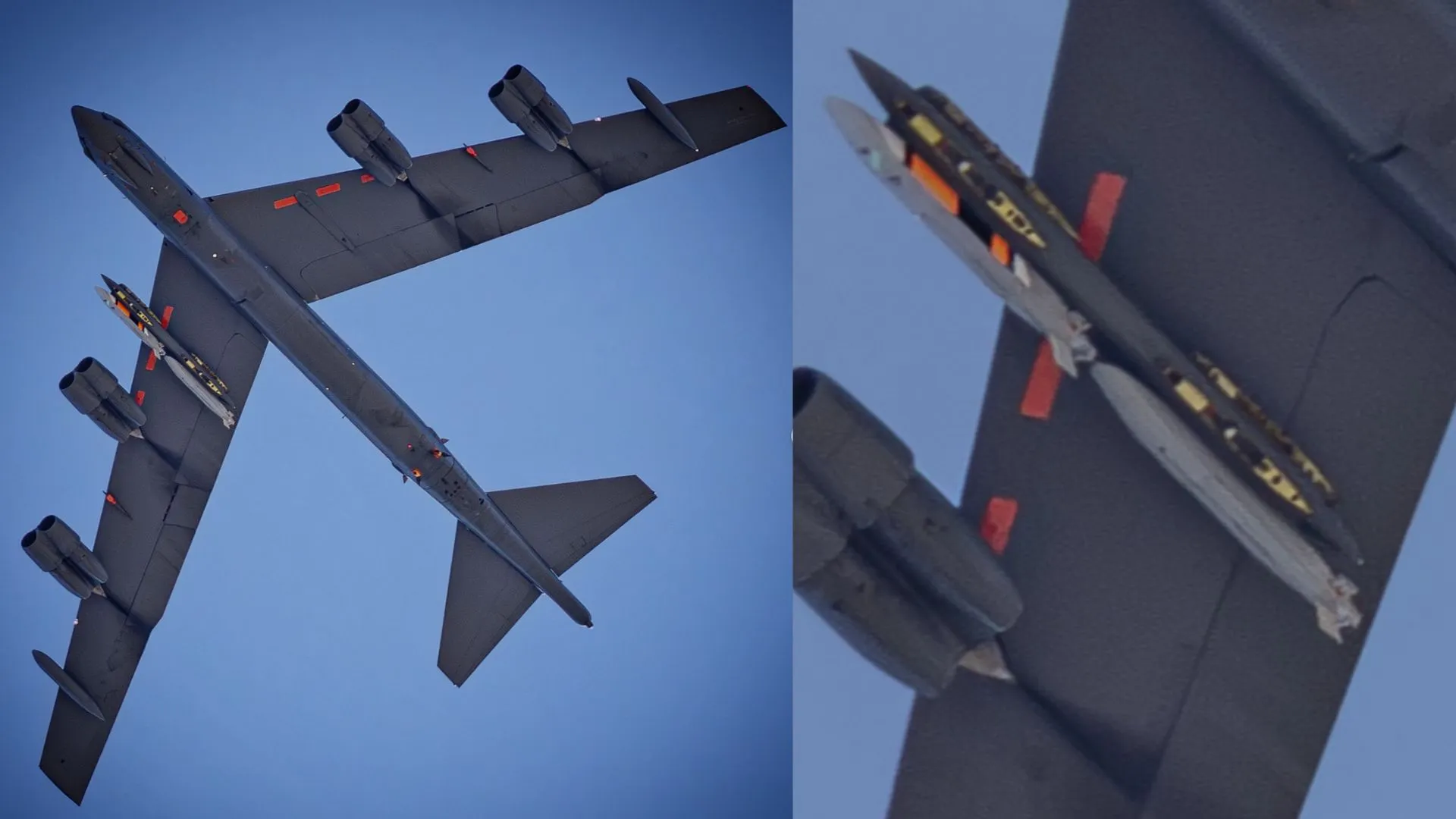Copyright Interesting Engineering

A B-52H Stratofortress was photographed over California carrying what appears to be the new AGM-181 Long-Range Standoff (LRSO) stealth nuclear cruise missile, marking its first public sighting. The bomber, Torch52, was spotted on October 29, 2025, over Owens Valley, California. Aviation photographer Ian Recchio took clear photos showing two unknown missiles attached under the plane’s right wing. “We heard Torch52 on the scanner and looked up just in time to catch it climbing to about 5,000 feet,” Recchio told The Aviationist. “When we reviewed the photos, the ordnance looked unlike anything we’d seen before.” The most advanced nuclear cruise missile The missiles were mounted on the outer stations of a Multiple Ejector Rack, a device under the aircraft wing that holds and releases several munitions during flight. Mounted missiles showed features similar to earlier images of the AGM-181A LRSO, including fold-out wings, an inverted-T tail with three surfaces, and a sharply angled, wedge-shaped body. This nuclear stealth missile is approximately 20 feet in length and utilizes composite materials to enhance its stealth features. It incorporates avionics for navigation and targeting. Its guidance system is designed for accuracy in contested environments. Analysts say these features are very similar to the Air Force’s new nuclear-capable standoff missile. This missile is designed to be launched from a great distance, beyond enemy defenses, and will replace the older AGM-86B Air-Launched Cruise Missile (ALCM). The LRSO is different from the AGM-86B in several ways. It has a longer range, better stealth, and updated guidance systems. These upgrades enable it to bypass air defenses and strike from farther away. While the Air Force has not confirmed the weapon’s identity, the sighting aligns with the LRSO’s ongoing flight test program. Raytheon became the main contractor in 2020, with engineering and manufacturing beginning in 2021. Since then, several important test flights have been completed. The AGM-181 is designed to enable US bombers to strike well-defended strategic targets from a distance, while evading advanced air defense systems. It will be compatible with both the B-52H Stratofortress and the next-generation B-21 Raider stealth bomber. Expected to fly at subsonic speeds, meaning it travels slower than the speed of sound, the missile utilizes an air-breathing engine. An air-breathing engine pulls in air from the atmosphere to mix with fuel for combustion, similar to the previous model. These upgrades include a smaller radar cross-section, meaning the missile appears smaller and less visible on enemy radar systems. This is achieved by using advanced composite materials and special coatings that help it blend in with its surroundings. The missile also features electronic countermeasures, which are onboard systems designed to jam or disrupt enemy radar and tracking devices. This technology makes it even more difficult for defenses to detect and intercept the missile. America’s oldest bomber “LRSO is a critical modernization effort for the U.S. nuclear triad,” Air Force acquisition chief Andrew Hunter told the Senate Armed Services Committee last year. “The program is on track and performing well on both cost and schedule.” Pentagon documents show plans to buy about 1,020 missiles to replace 528 AGM-86Bs by 2030. The total program is expected to cost $16 billion, with each missile projected to cost about $14 million, according to Air and Space Forces Magazine. Analysts pointed out that the timing of this test flight, which happened just days after Russian President Vladimir Putin announced new tests of Russia’s nuclear-powered Burevestnik cruise missile, may be just a coincidence. Still, comparing these two missiles gives useful insight into their strategic roles. The LRSO is designed for precision and stealth, whereas Russia’s Burevestnik utilizes a nuclear engine and is reportedly capable of unlimited range. Such capabilities present unique challenges and opportunities for respective defense strategies. Military observers have noted that the US flight test, which was visible in daylight, may demonstrate capability. Some analysts interpret this visibility as a possible indicator of operational milestones. Earlier, in March 2024, Recchio photographed a B-1B Lancer carrying the Air Force’s new 5,000-pound GBU-72/B bunker-buster during a daylight test over the Mojave Desert.



